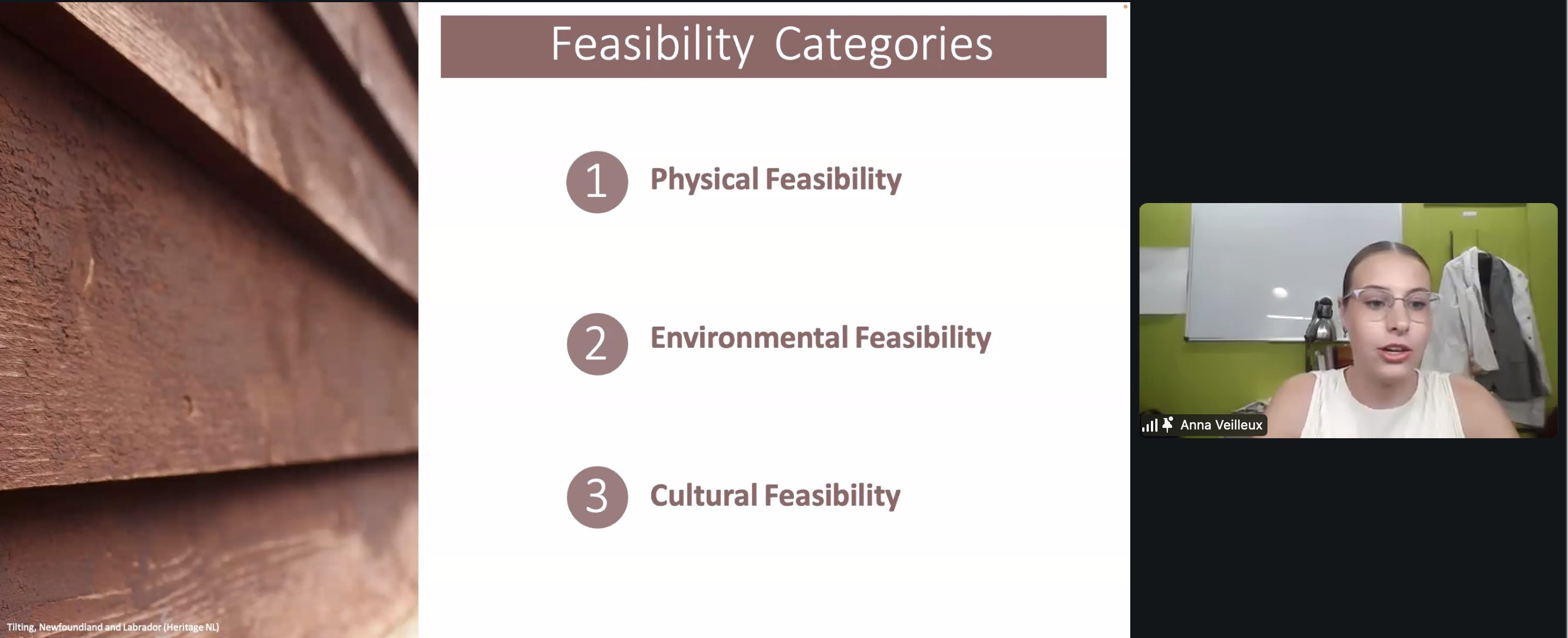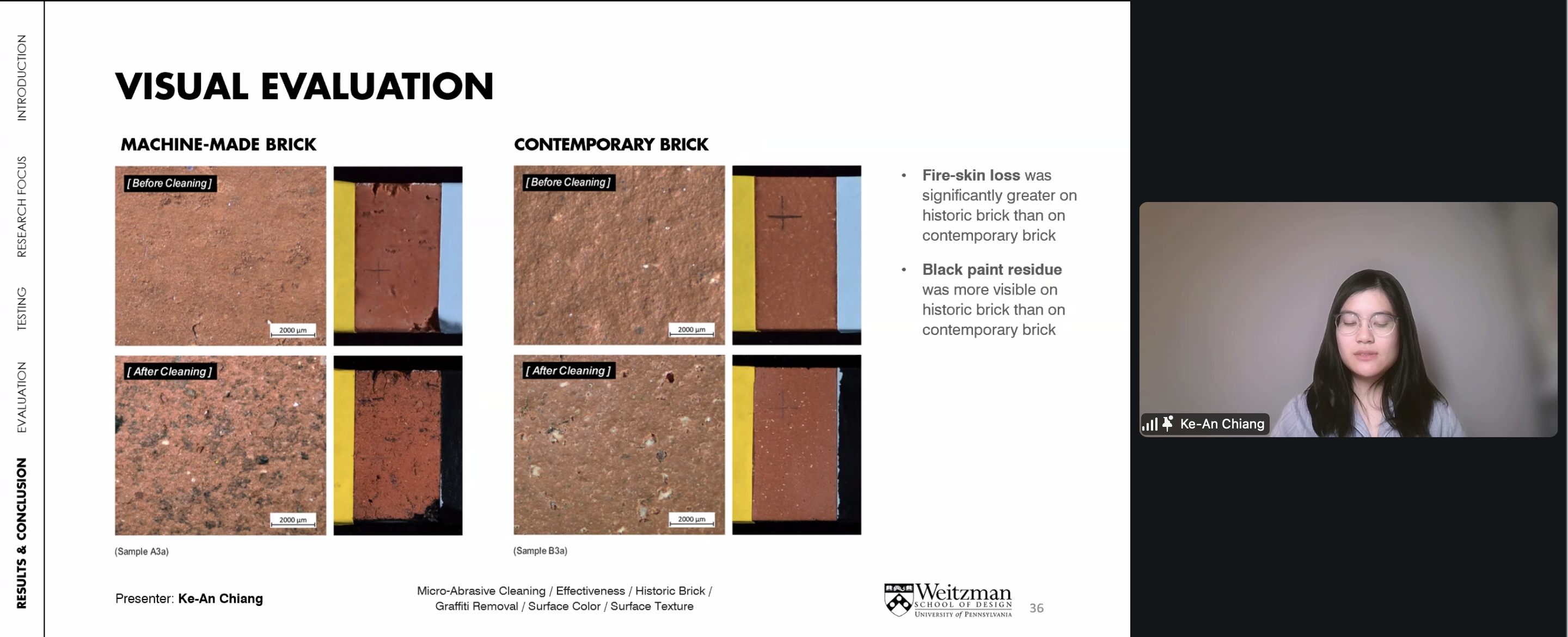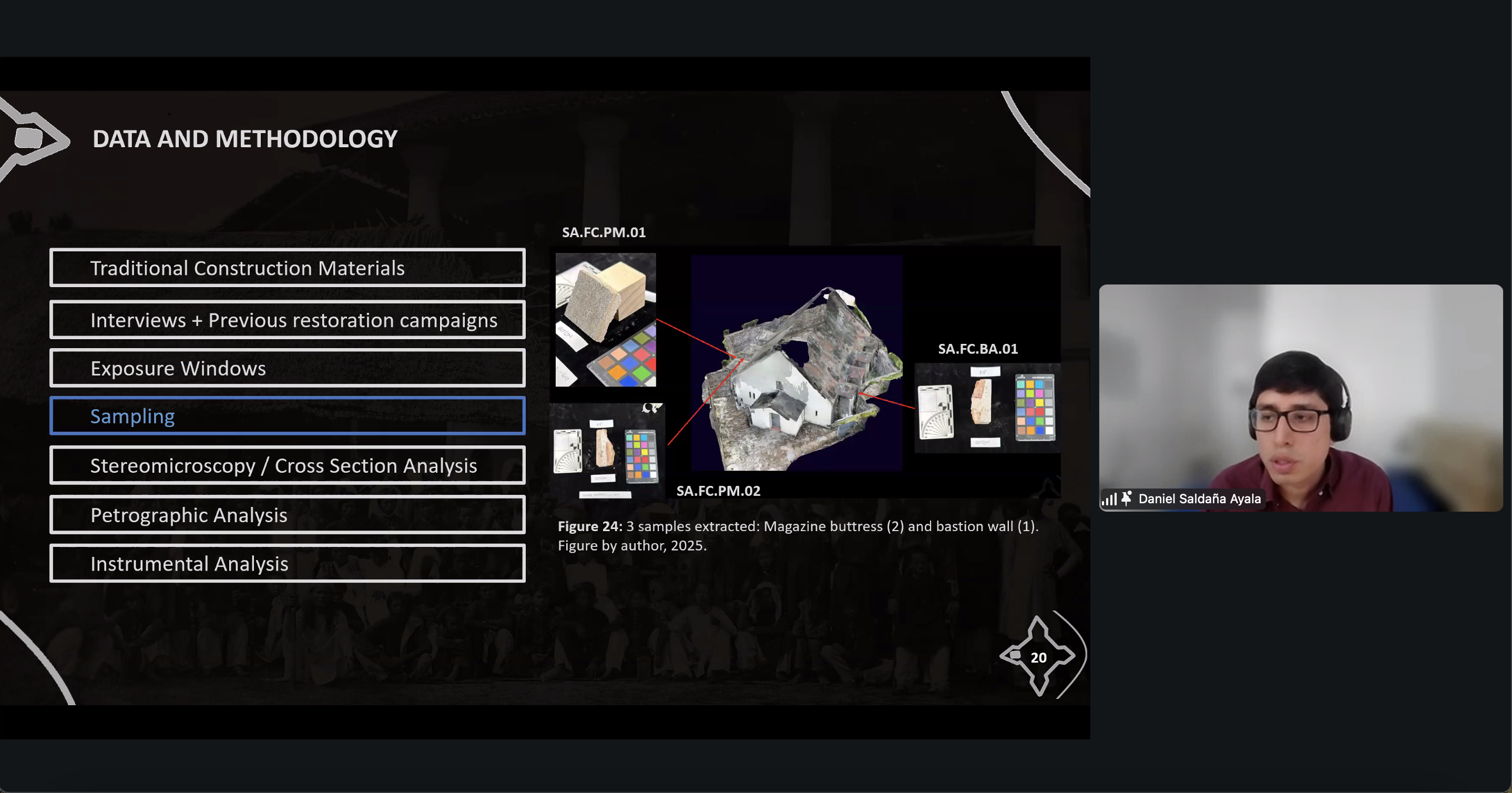The Architectural Conservation Lab congratulates conservation students Daniel Alonso Saldana, Ke-An Chiang, Anna Veilleux, and Qingrou (Doreen) Dai for successfully presenting their research during the 50th conference organized by the Association of North American Graduate Programs in Conservation (ANAGPIC), hosted between April 23-25, 2025.
This year marked the association’s 50th reunion, celebrating five decades of conservation education and collaboration. The association also welcomed its 10th newest member, UNAM’s School of Conservation, Restoration and Museography (ENCRyM). The conference was held virtually and was organized by Queen’s University’s Art Conservation Program.
A Technical Study of Fish Collagen-Based Binder Used in Architectural Polychrome Painting of Jiangsu Province: History and Application
Qingrou (Doreen) Dai
S0-Doreen-Presentation-ANAGPICAs a material found in Jiangsu architectural polychromatic painting, fish collagen binder derived from Yellow Croaker (Larimichthys polyactis), has served as a ground layer binder and as a gilding adhesive since the Song dynasty (960–1279 CE). However, the understanding of this traditional material faces challenges due to ambiguous terminology in historical texts, oral history and the lack of well-preserved material evidence. This thesis investigates the historic application and related recipes of fish collagen binder through an examination of the archival record, and an experimental preparation of the binder using both historic and modified modern recipes. This binder was also used to replicate traditional paint and further evaluated for surface adhesion. A painted wood mock-up replicating traditional painting and gilding techniques was executed to further understand its practical application, following a Song dynasty construction manual Yingzao Fashi. This study evaluates the binder as a potential material for future conservation application.
Of Brick and Chuna: Technological Tradition and Innovation at Fort Cornwallis,
Penang, Malaysia
Daniel Saldaña Ayala
SALDANA_Presentation_0423_ANAGPIC-1The study of nineteenth century British colonial buildings in Southeast Asia can provide insights into how knowledge systems interacted to create hybrid building technologies responding to environmental, social and material conditions. This hybridity can be found in military architecture such as powder magazines, buildings designed to efficiently store gunpowder. Constructing a bombproof and dampproof structure required British military engineers and master builders to rely on constructions treatises and their previous experience. However, the tropical climate required them to look for innovative solutions. Using the powder magazine at Fort Cornwallis in Penang, Malaysia as a case study, this research examines if and how 19th-century British fortification building technology, and specifically powder magazines construction technology, was adapted to the tropical environments of their colonial settings in Southeast Asia. To address this question, the research explores three major subproblems: understand the social interactions between the different populations involved in the project and their contribution to the built outcome; understand the architectural design by reviewing European construction treatises and the contemporary built environment of Penang; and identify traditional local and imported materials utilized for colonial construction. Laboratory analyses were performed on samples for characterization including petrographic and instrumental analysis such as X-Ray Diffractometry (XRD), Scanning electron microscope with energy dispersive spectroscopy (SEM-EDS), (FT-IR) and Gas Chromatography – Mass Spectroscopy (GC-MS). Studying the case study through these three approaches provides a holistic evidence-based understanding of the adaptation of building technology to tropical climates in the former British colony of Penang and contributes to its adequate
interpretation and conservation efforts.
Micro-Abrasive Cleaning for Historic Red Bricks: Analyzing the Effectiveness of Black Spray Paint Graffiti Removal and Changes in Surface Characteristics
Ke-An Chiang
KEAN_0415_-ANAGPIC-FINALGraffiti on historic structures, while sometimes valued as a form of artistic and social expression, poses significant challenges to the conservation of porous masonry materials in urban environments. Spray paint, with its rapid application and strong adhesion, is the most common form, creating persistent difficulties for property stewards. Cleaning remains the primary method of addressing graffiti, but improper techniques can cause irreversible damage, altering surface characteristics and undermining preservation efforts. Porous masonry materials, such as 19th-century machine-made red bricks with lower hardness and higher porosity than dense stone or modern bricks, are especially vulnerable to paint absorption and surface damage during cleaning, as spray paint can potentially seep deeply into the material’s pore network. Current cleaning methods, including chemical treatments, sandblasting, and laser cleaning, have significant limitations, including potential surface damage and environmental risks. Micro-abrasive cleaning, using fine abrasive particles at low pressures, offers a controlled, minimally invasive alternative. However, its effectiveness and potential for damage, particularly on historic bricks, remain underexplored. This study examines the effectiveness and limitations of micro-abrasive cleaning for removing black aerosol spray paint from late 19th-century weathered machine made red bricks. Key research questions include defining cleaning effectiveness based on color and surface texture changes, assessing and quantifying surface damage, and correlating damage thresholds from past literature with on-site visual assessments. The research aims to inform broader discussions on a systematic framework for balancing effective graffiti removal with the conservation of historic bricks, supporting preservation practices.
An Evaluation of Fish Oil as a Low Environmental Impact Alternative Paint Binder System: A Comprehensive Review of North American Fish Oil Production and Use
Anna Veilleux
Veilleux_ANAGPIC_2025This thesis investigates the potential reintroduction of Atlantic Cod-liver (Gadus morhua) and Menhaden (Brevoortia tyrannus) oil as sustainable alternatives to conventional polymer-based paint binders. Modern architectural paints rely on non-biodegradable acrylics, alkyds, and petroleum-based compounds, contributing to environmental degradation and health risks. Through a historical analysis, this research traces fish oil’s use from indigenous practices to its industrial-scale production, highlighting its viability as a low-impact material. The study examines fish oil’s physical properties, potential environmental impacts, and multi-faceted cultural significance. Scientific findings demonstrate its chemical properties and benefits as a material coating while examinations of previous environmental research indicate that fish oil can be sustainably sourced from byproducts. Cultural case studies from Newfoundland emphasize its heritage value and potential for preservation. This research ultimately underscores fish oil’s role in shaping the built environment and presents it as a viable, eco-friendly alternative for heritage conservation and sustainable architectural applications.



